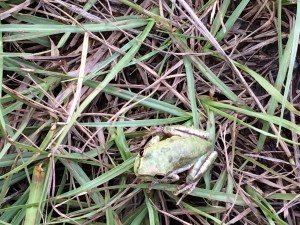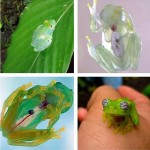Although I often miss the mountains, one of the benefits of living in North Carolina's Coastal Plain is the tree frogs. During my summer at Duke's Marine lab in Beaufort, we would often return to our apartment to find the building and our door absolutely covered in frogs; in the morning, they'd be all over the car, and we'd have to pull them out of the tires. They don't seem to be quite as prevalent in Greenville, but there are plenty (they seem to like sitting on the porch, where they can taunt the cat). During a trip to Washington, NC, we ran across this stunning green little guy, and I decided to find out what he was.
With a little Googlefu, my best guess is that frog was a squirrel treefrog (Hyla squirella) based on its spots and coloration.
How to Identify Frogs/Toads
You'll need these key features to identify of your frog/toad:
- Body pattern (spots, stripes, etc.)
- Body color (green, red, brown, etc.)
- Toe disc prominence
- Presence of warts
- Location you found it
- Others: leg color, eye markings, etc.
Then head over to DiscoverLife and check off your frog's traits; using your criteria, they'll return a list of possible matches in the left frame.
For people in NC, HerpsofNC.org has a good visual listing of the species you can find here. They also have sections on snakes, lizards, salamanders, and turtles.
Remember, frogs of the same species can be different colors and some can change colors, so your frog might not exactly match the pictures. The squirrel frog, for example, can be green or brown and may or may not have spots. Once you have the frog narrowed down to two or three species, search for various images of each species and compare it to your frog.











